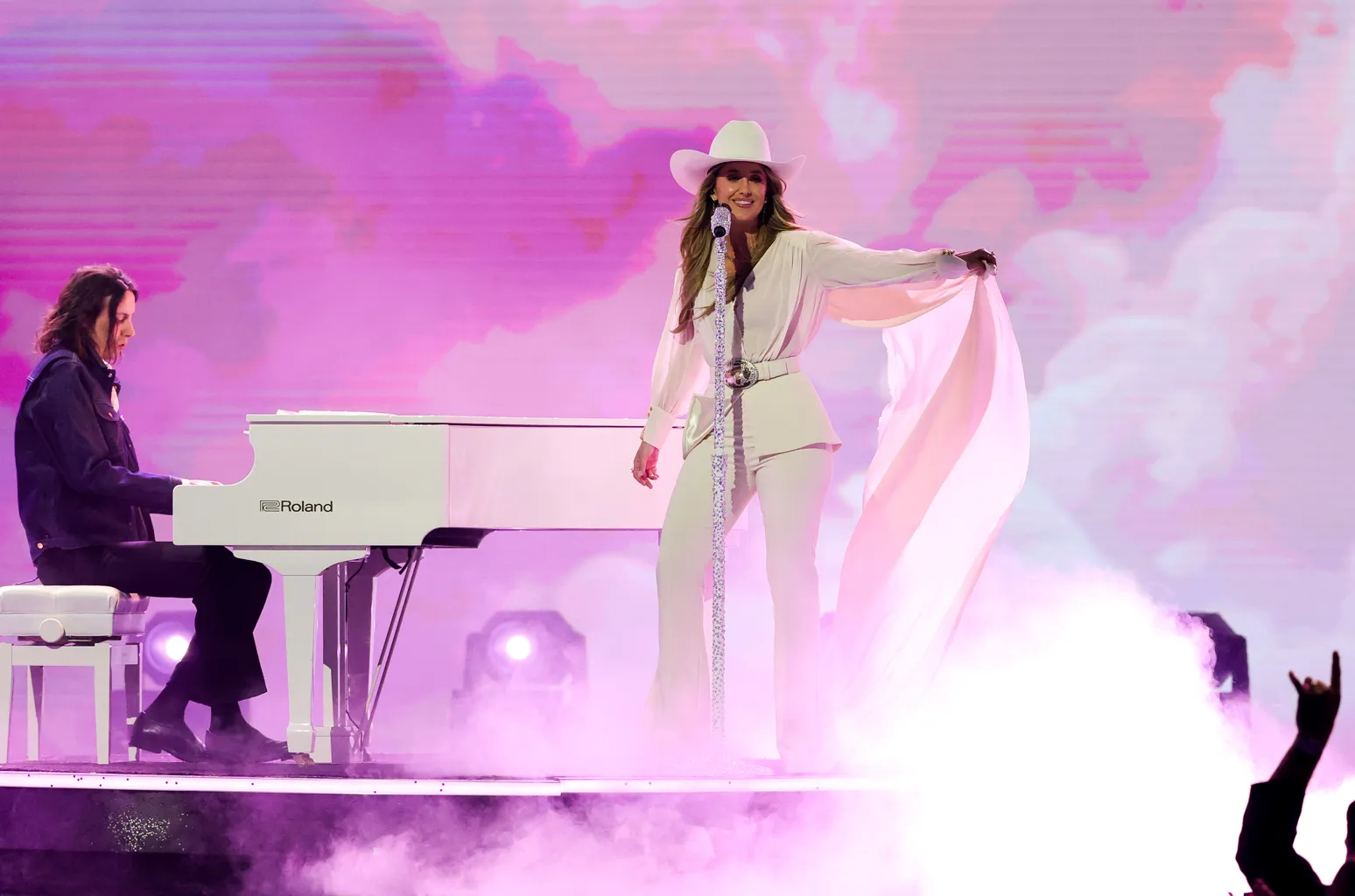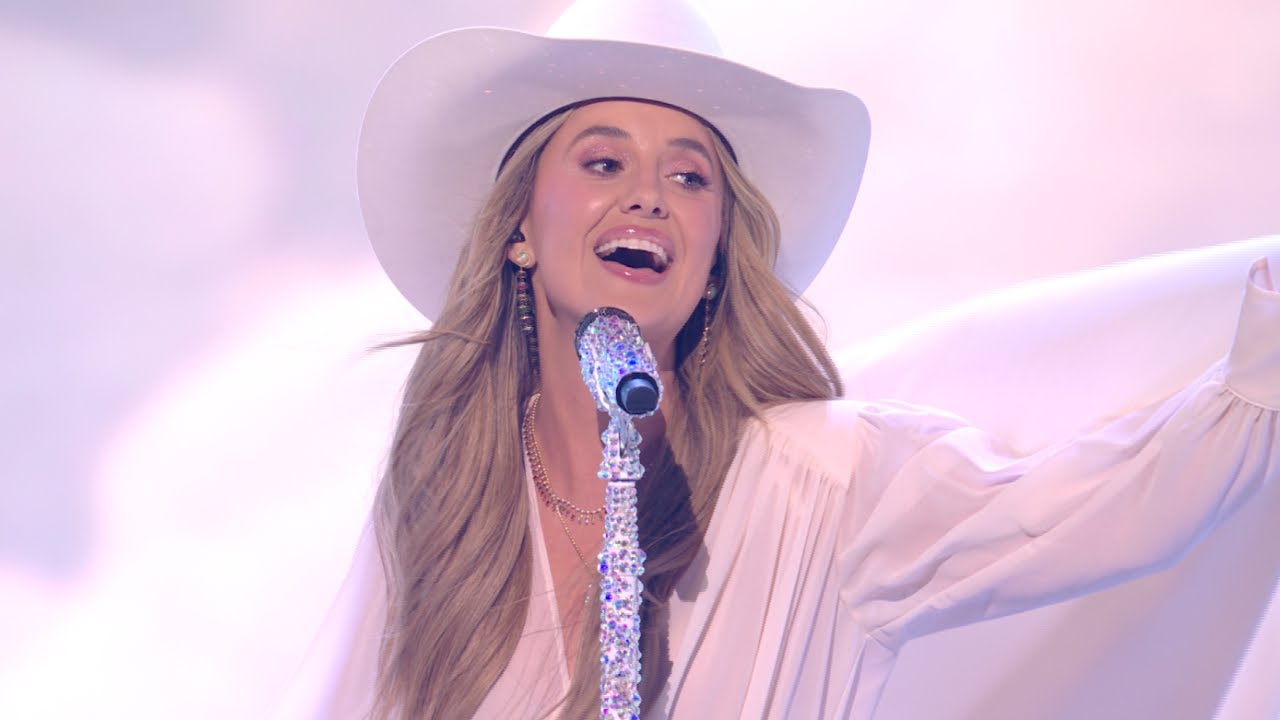I. A Stage Beyond the Game
In the crisp morning light of October 2025, social media erupted: country titan Blake Shelton and rising powerhouse Lainey Wilson had officially agreed to perform together in a brand-new event branded the “All-American Halftime Show”, hosted by Turning Point USA and set to air opposite Super Bowl LX — a bold move that could redefine how America thinks about its halftime moments.
Their joint statement read: “This isn’t about fame or rivalry. It’s about faith — reminding the world that God still moves through music, through love, through us.”
And Wilson added: “We’re bringing real stories, real hearts, and real hope back to the stage. America’s ready for something true again.”
This isn’t just a show — it’s being billed as a cultural statement.
II. Two Artists, One Vision
Blake Shelton needs little introduction. With multiple chart-toppers, years of television presence and a reputation for “authentic country voice,” he carries the weight of traditional genre respect. In earlier interviews, he admitted that his wife Gwen Stefani “saved” him during a low point in his life, a reflection of how much he values truth and connection.

Lainey Wilson’s rise has been meteoric: growing up on a Louisiana farm, grinding through talent contests, eventually capturing major awards and critical recognition. She recently told NME:
“Getting to know women like Miranda Lambert and Reba McEntire has shown me this fight isn’t new — it’s a generational struggle.”
She brings a younger voice, a hunger for storytelling, and a desire to use her platform for something bigger.
Together? They represent a bridge: tradition meets new, veteran meets emerging, commercial meets heartfelt.
III. The Vision of the Show
The All-American Halftime Show is conceived as more than entertainment. Hosted by Erika Kirk, widow of the late Charlie Kirk, the event carries the theme of faith, family and freedom. According to the promotional materials, the performance will feature:
-
Shelton’s signature country anthems
-
Wilson’s narrative-driven songs
-
A 200-voice choir
-
Spectacular light and stage visuals commemorating Charlie Kirk’s legacy of “American ideas”
-
A message of unity across stamina, culture and country
Social-media hashtags like #HalftimeForTheHeart and #CountryRevolution have already gained traction.
This timing — airing opposite the Super Bowl — signals ambition: to capture audiences not just hungry for sport, but hungry for meaning.
IV. Why Now? Why Them?

In a polarized moment in American culture, many are seeking common ground. Country music, often seen as niche or regional, is now mainstream. Wilson herself has spoken about this transition:
“Artists like Post Malone and Beyoncé are introducing their audiences to [country music], and it’s only done good things for the genre.”
Shelton’s involvement lends gravity; Wilson’s involvement lends momentum. Together they tap into something greater than fandom — identity, heritage, roots.
The decision of Turning Point USA to anchor the show around “faith, family, freedom” positions the performance as an ideological moment, not merely a spectacle.
V. The Anticipated Impact
Industry insiders predict this performance could shift how televised halftime shows are produced. Instead of relying purely on pop spectacle, this blends genre, spirituality and national narrative.
Some potential outcomes:
-
Country music’s legitimacy in the mass-media moment is reinforced
-
Viewers who skip Super Bowl halftime may tune for an alternative cultural event
-
Sponsors seeing aligned values may shift advertising strategies
-
The performers’ careers receive a boost not only in music charts but in cultural relevance
For Wilson, who recently dominated awards and discussed the exhaustion of constant touring, this marks a milestone shift into global cultural consciousness. For Shelton, it’s another chapter in a long career — albeit one intentionally framed as “something we do together.”
VI. The Personal Stakes

Both artists have deeper reasons for participating. Wilson, rooted in her small-town upbringing, has long said she wants to write for people like her — and then discovered that people all over the world respond.
Shelton has publicly acknowledged his fears and choices — stepping away from long-term TV commitments to focus on what matters.
Now, on one of the biggest stages imaginable, they stake their craft on something intangible: unity, message and legacy.
VII. The Countdown Begins
In the weeks leading to Super Bowl LX, anticipation builds. Sneak-peeks, social-media drops, behind-the-scenes footage will amplify the story.
Analysts suggest: if the show draws even a fraction of the Super Bowl’s viewership, it will rewrite the notion of what a halftime event can deliver.
Mark your calendars. Because this might not be just another performance — it might be America’s halftime moment of 2025.
Epilogue: More Than a Show
In a world that often races for novelty, what Shelton and Wilson propose is something quieter — yet profound.
Faith. Family. Freedom. Music that doesn’t just entertain, but remembers.
When the lights go down and the microphones go silent, the message will still echo: we are together — in rhythm, in story, in song.
“This is our halftime.”